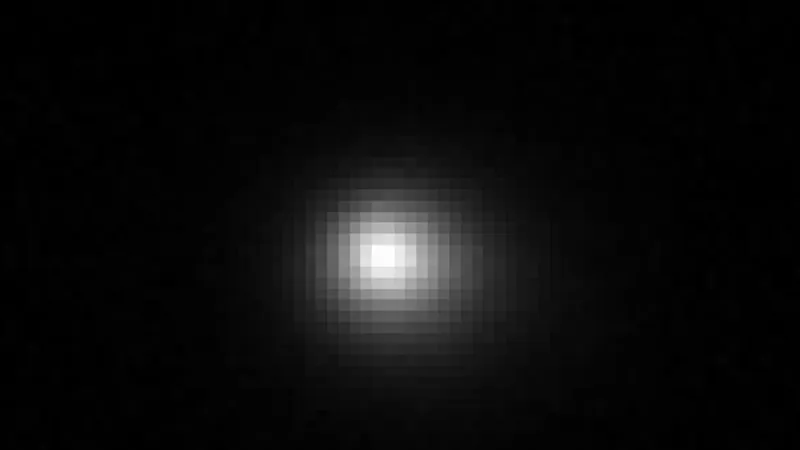
Cosmic Discovery: A Rare Interstellar Comet Spotted First by Cutting-Edge Telescope
2025-07-26
Author: Yu
The Interstellar Intruder: 3I/ATLAS
In a groundbreaking discovery just shy of a month ago, astronomers identified a mysterious object streaking through our solar system, confirmed as an interstellar comet headed towards the Sun. The cosmic star of the show, 3I/ATLAS, was first spotted by the newly operational Vera C. Rubin Observatory—making headlines as the observatory’s inaugural achievement.
A Lucky Break for the Rubin Observatory
During its commissioning phase, the Rubin Observatory, perched majestically in the Andes Mountains of Chile, fortuitously pointed its advanced telescope to the precise region of the sky where 3I/ATLAS was emerging. On June 21, before anyone else spotted it, this revolutionary telescope captured stunning images of the comet—a little over a week prior to its official detection.
The Power of the Rubin Observatory
Backed by the National Science Foundation and the Department of Energy, the Rubin Observatory is home to the largest digital camera in astronomy, boasting a mind-boggling 3.2-gigapixel resolution. In its debut on June 23, the observatory unveiled breathtaking images showcasing millions of galaxies and stunning stellar phenomena. Among these were supernovas and far-off galaxies, vital for unraveling the mysteries of the universe's expansion.
Spotting the Comet Before Anyone Else
Thanks to its groundbreaking capabilities, the Rubin Observatory was the first to document the comet before other telescopes caught up. 3I/ATLAS was initially detected in data accumulated by the Asteroid Terrestrial-impact Last Alert System (ATLAS) between June 25 and 29, marking the beginning of a rush for data collection. By July 2, the International Astronomical Union confirmed that this remarkable comet originated outside our solar system, making it only the third of its kind ever discovered.
A Comet from the Dawn of Time
With astronomers clamoring to learn more, the Gemini North telescope in Hawaii recently captured detailed close-ups of 3I/ATLAS. Initial findings suggest this comet may be the oldest ever observed—around 2 billion years older than our solar system itself! Unlike its predecessors, 'Oumuamua and Comet 2I/Borisov, 3I/ATLAS travels at blistering speeds of approximately 37 miles per second (60 kilometers per second).
Vera C. Rubin's Pioneering Observations
The Rubin Observatory's early captures of 3I/ATLAS are invaluable, as they represent the first high-precision images of this comet. A recent paper detailing the findings includes 49 breathtaking images, showcasing the comet's distinctive cloud of gas and dust enveloping its icy core.
The Countdown to Departure
However, this cosmic visitor won't linger for long. On August 22, 3I/ATLAS will move out of the observatory's viewing range. Until that date, astronomers are eagerly monitoring the skies, hoping to gather more insights on this interstellar marvel before it vanishes into the vastness of space.


 Brasil (PT)
Brasil (PT)
 Canada (EN)
Canada (EN)
 Chile (ES)
Chile (ES)
 Česko (CS)
Česko (CS)
 대한민국 (KO)
대한민국 (KO)
 España (ES)
España (ES)
 France (FR)
France (FR)
 Hong Kong (EN)
Hong Kong (EN)
 Italia (IT)
Italia (IT)
 日本 (JA)
日本 (JA)
 Magyarország (HU)
Magyarország (HU)
 Norge (NO)
Norge (NO)
 Polska (PL)
Polska (PL)
 Schweiz (DE)
Schweiz (DE)
 Singapore (EN)
Singapore (EN)
 Sverige (SV)
Sverige (SV)
 Suomi (FI)
Suomi (FI)
 Türkiye (TR)
Türkiye (TR)
 الإمارات العربية المتحدة (AR)
الإمارات العربية المتحدة (AR)